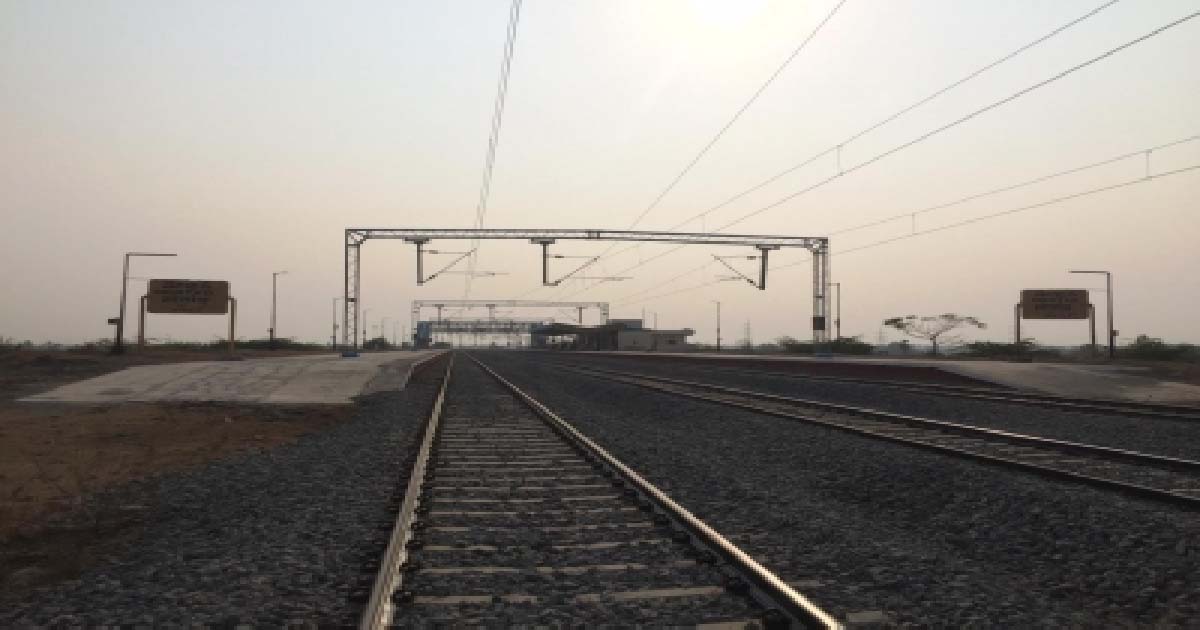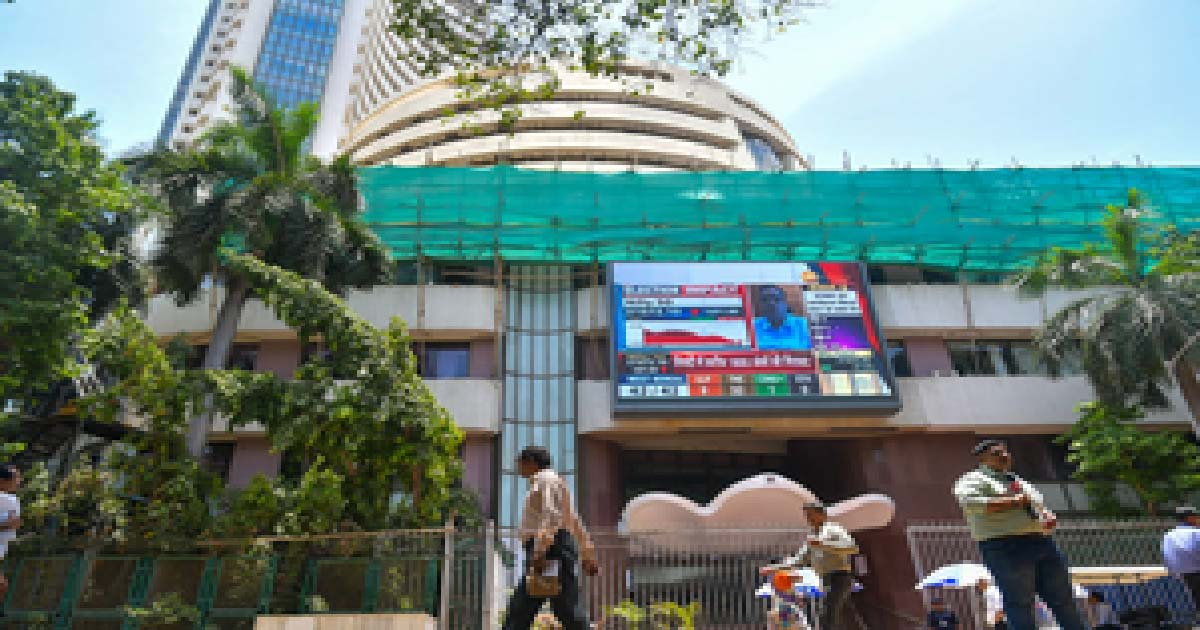Business
iPhone 14 Plus stumps rivals in bigger screen, longer battery game
Yet to make up your mind on which iPhone to buy this Diwali? The 6.7 inch iPhone 14 Plus is now here that brings a larger display and best battery life with A15 Bionic chip, along with a deep integration of hardware and software.
With the 6.7-inch display, you can see more content like text and images when browsing the web, without having to scroll as much.
In messaging apps, you can see more text and larger text, which is great for accessibility and you have more workspace available for editing content in the Photos app.
It also enables a more immersive experience when watching your favourite show on Apple TV+ or playing your favourite game.
Can it be your next iPhone? Let us find out.
The custom-designed OLED high-resolution displays have 800 nits peak brightness, amazing contrast for true blacks, and an incredible HDR experience for photos and videos.
When viewing HDR photos or videos, the display can push the brightness up to 1200 nits for a true-to-life viewing experience.
The Super Retina XDR display (2778 x 1284 pixels) on the larger 6.7-inch size of iPhone 14 Plus offers a super experience � with a beautiful design with aerospace-grade aluminium, Ceramic Shield front which is still tougher than any smartphone glass and water and dust resistance.
On the battery front, the iPhone 14 Plus lasts longer throughout the day with the best battery life ever in an iPhone. It has incredible power efficiency and supports fast-charging and MagSafe wireless charging.
In the camera department, the device better photo and video capture across the entire range of lighting.
iPhone 14 Plus have a new camera system that combines advanced sensors and lenses with intelligent computational photography powered by A15 Bionic.
The new front camera improves every selfie, with a faster aperture and autofocus for the first time.
Selfies and group shots can focus from multiple distances, low-light performance gets better, and you can get close-up detail for the perfect social media shot.
The Cinematic mode now supports up to 4K resolution and 30 fps, and records in Dolby Vision HDR.
Smoother zoom in video Video mode features smoother zoom ramping between cameras when pinching to zoom and using the zoom wheel. You can see the transitions after you shoot the video.
A new TrueDepth front camera supports autofocus for the first time.
This will allow sharp focus at multiple distances. Group shots from farther away will stay in focus even with subjects at varying distances throughout the shot.
Up-close shots can show off great detail with this device. It has a faster f/1.9 aperture for a 38 per cent increase in lowlight for photos and videos.
Combined with TrueDepth capabilities, it can focus faster even in low light.
It takes great-looking, detailed photos and videos across all lighting and brings a big improvement to low-light photos, up to 2x, thanks to the Photonic Engine.
The new TrueDepth camera offers the most secure facial authentication in a smartphone, says the company. Face ID gets better, now supporting unlocking in landscape orientation.
For more creative control, the focus can be changed both during and after capture.
Smart HDR 4 renders each person in a group shot individually, bringing beautiful colour, contrast, and lighting for each subject, making images more true to life.
The True Tone flash is up to 10 percent brighter and has better light uniformity for more consistent lighting.
The customers in India can purchase iPhone 14 in colours like midnight, blue, starlight, purple, and (PRODUCT) RED in 128GB, 256GB, and 512GB storage starting from Rs 89,900.
In India, people can get Rs 5,000 cashback on HDFC Bank cards and no-cost EMI for a six-month period on HDFC Bank cards. For trade-in, customers can get up to Rs 3,000 exchange bonus.
Conclusion: iPhone 14 Plus brings the larger 6.7-inch display and the best battery life ever on an iPhone to more people.
The device is great for those who want a much larger screen in a light and durable aluminium design with big enhancements to all cameras, excellent performance, essential safety capabilities, and 5G (coming to India via a software update in December).
Business
38 Railways projects worth Rs 89,780 crore sanctioned in Maharashtra: Centre

New Delhi, Dec 20: A total of 38 railway projects (11 new lines, 2 gauge conversion and 25 doubling) of a total length of 5,098 kms and costing Rs 89,780 crore have been sanctioned in Maharashtra (as on April 1, 2025), the government said on Saturday.
During the last three fiscals — 2022-23, 2023-24, 2024-25 and the current financial year 2025-26 — 98 surveys (29 New Line, 2 Gauge Conversion and 67 Doubling) of total length 8,603 km falling fully/partly in the state of Maharashtra, have been sanctioned, it said.
“Further, construction works on the flagship High-Speed Bullet Train project have gathered momentum in Maharashtra. Now 100 per cent of land acquisition has been completed. Works on bridges, aqueducts, etc. have been taken up,” the Railways Ministry said in a statement.
In addition, platform extension work at 34 stations to accommodate 15-car EMUs has been taken up.
To improve the capacity of the rail network in the Mumbai suburban area, the Mumbai Urban Transport Project (MUTP)-II costing Rs 8,087 crore, MUTP-III costing Rs 10,947 crore, and MUTP-IIIA costing Rs 33,690 crore have been sanctioned.
To enhance passenger carrying capacity, 238 rakes of 12 cars each with doors have been sanctioned under MUTP-III and IIIA at a cost of Rs 19,293 crore. The process for the procurement of these rakes has been taken up.
With Western DFC also passing through Maharashtra, as about 178 route km of it or about 12 per cent of the overall route length, falling in the state, the ministry said that “about 76 km of this project from New Gholvad to New Vaitarna in Maharashtra has already been commissioned. Balance works have been taken up. Connectivity of WDFC to JNPT will boost the capacity to handle cargo and container traffic from the port to Delhi NCR”.
Presently, about 120 originating Mail/Express trains and about 3,200 suburban trains are handled daily in the Mumbai area.
Business
Indian indices end week in bullish tone over positive global cues

Mumbai, Dec 20: Indian equity benchmarks closed on a strong note this week, snapping a four-day losing streak amid positive global cues stemming from US inflation data.
The market ended the week in a bullish tone with Nifty surging 0.18 per cent during the week and 0.58 per cent on the last trading day to 25,966, after a softer US CPI print boosted expectations of a milder Fed stance.
At close, the Sensex was up 447.55 points or 0.53 per cent at 84,929.
Indian equities were traded in a cautious tone for most of the week, weighed down by persistent FII outflows, rupee depreciation, and heightened global uncertainties.
Further, early sessions also saw pressure from rising Japanese bond yields and expectations of Bank of Japan (BoJ) tightening, which amplified risk-off sentiment across emerging markets.
Bargain hunting and lower crude prices helped large caps drive a late rebound, trimming most of the week’s losses, market watchers said.
Broader indices also rose marginally during the week, with the Nifty Midcap100 up 0.04 per cent, while Nifty Smallcap100 was unchanged during the week. It gained 1.34 per cent at the close.
On the sectoral front, all sectors traded with a positive bias. Major contributions came from Nifty Realty, Auto, Healthcare, and Chemicals, while other sectors also posted modest gains.
Nifty has 26,200-26,300 as stiff resistance levels while 25,700–25,800 levels will act as support zone, they added.
Analysts said markets will likely maintain a cautiously positive bias in near future but remain highly sensitive to global cues.
Key drivers going forward include comments from the global central banks for the 2026 policy trajectory. While sentiment remains constructive, near-term volatility may persist amid uncertainty over trade deal timelines and the Indian rupee stability, they added.
Business
Nifty to touch 29,094 in 12 months supported by durable earnings, strong macro backdrop

New Delhi, Dec 19: India’s benchmark index Nifty is expected to touch 29,094 in one year based on long‑term valuation averages and earnings durability, a report said on Friday.
Wealth management firm PL Wealth said in the report that India enters the end of 2025 from a position of relative macro strength with record‑low inflation, a dovish monetary stance, resilient domestic demand and improved corporate earnings visibility.
“In the near term, large-cap stocks remain preferred due to their earnings stability and strong balance sheets, while selective exposure to high-quality mid-cap names is being added as visibility improves,” the wealth management firm cited its strategy.
Over the next 6 to 24 months, the earnings cycle is expected to broaden across consumption, financials, capex-linked sectors and select industrials, supported by benign inflation, lower interest rates and sustained domestic liquidity.
“India’s current macro configuration is among the most constructive we have seen in over a decade,” said Inderbir Singh Jolly, CEO, PL Wealth Management.
While global uncertainties will continue to create short-term volatility, India’s structural strengths—policy reform, financialisaton of savings and improving corporate balance sheets—position it well for sustained long-term growth, Inderbir added.
RBI’s 25 basis‑point cut to a 5.25 per cent policy repo rate lowered its CPI inflation projections and upgraded GDP growth estimates, signalling confidence in the sustainability of domestic demand, the report said.
The firm also noted FY26 GDP growth projection of 7.3 per cent underpinned by robust infrastructure spending, resilient consumption and key policy measures such as GST rationalisation and income-tax cuts.
The FY26 September quarter earnings season delivered broad-based strength, with several sectors—including hospitals, capital goods, cement, electronics manufacturing services, ports, NBFCs and telecom—reporting double-digit growth in EBITDA and profits.
The firm noted that Nifty earnings per share estimates for FY26–FY28 imply an earnings CAGR of nearly 14 per cent. Domestic institutional investors have anchored markets with record net inflows of over Rs 6.8 trillion year‑to‑date.
-

 Crime3 years ago
Crime3 years agoClass 10 student jumps to death in Jaipur
-

 Maharashtra1 year ago
Maharashtra1 year agoMumbai Local Train Update: Central Railway’s New Timetable Comes Into Effect; Check Full List Of Revised Timings & Stations
-

 Maharashtra1 year ago
Maharashtra1 year agoMumbai To Go Toll-Free Tonight! Maharashtra Govt Announces Complete Toll Waiver For Light Motor Vehicles At All 5 Entry Points Of City
-

 Maharashtra1 year ago
Maharashtra1 year agoFalse photo of Imtiaz Jaleel’s rally, exposing the fooling conspiracy
-

 National News1 year ago
National News1 year agoMinistry of Railways rolls out Special Drive 4.0 with focus on digitisation, cleanliness, inclusiveness and grievance redressal
-

 Maharashtra1 year ago
Maharashtra1 year agoMaharashtra Elections 2024: Mumbai Metro & BEST Services Extended Till Midnight On Voting Day
-

 National News1 year ago
National News1 year agoJ&K: 4 Jawans Killed, 28 Injured After Bus Carrying BSF Personnel For Poll Duty Falls Into Gorge In Budgam; Terrifying Visuals Surface
-

 Crime1 year ago
Crime1 year agoBaba Siddique Murder: Mumbai Police Unable To Get Lawrence Bishnoi Custody Due To Home Ministry Order, Says Report












